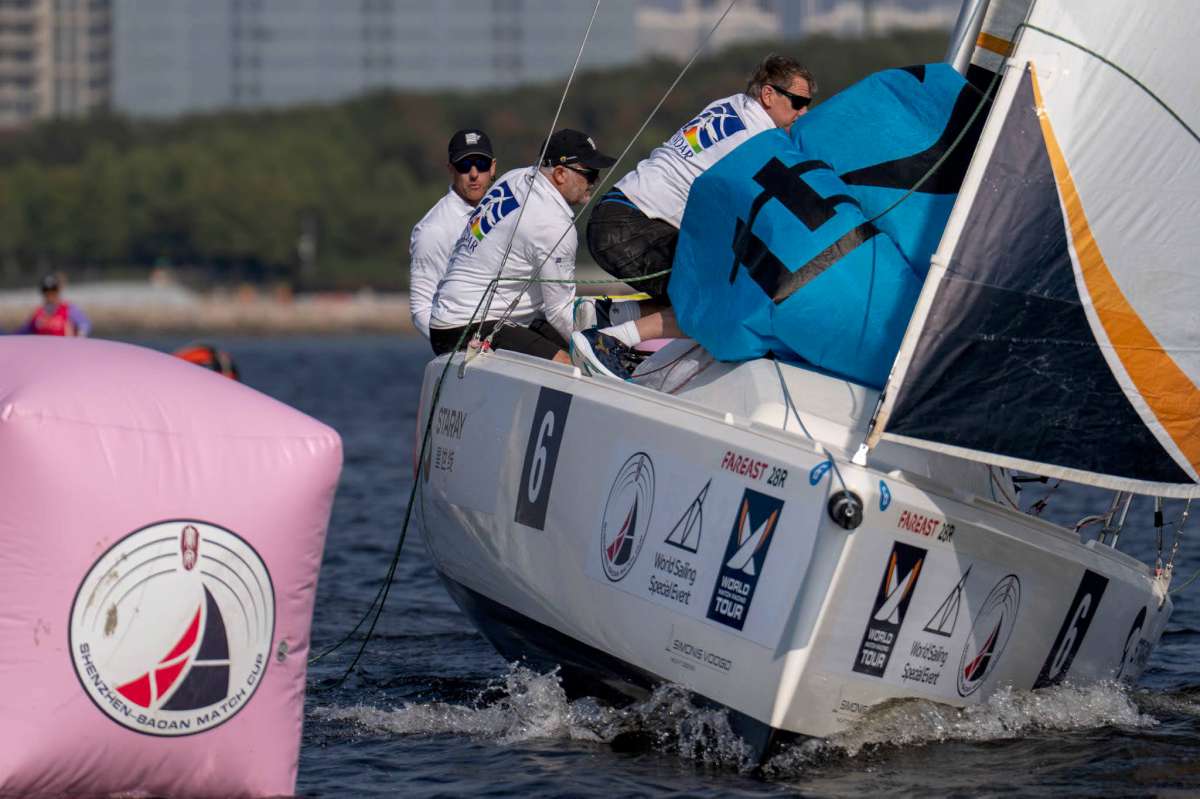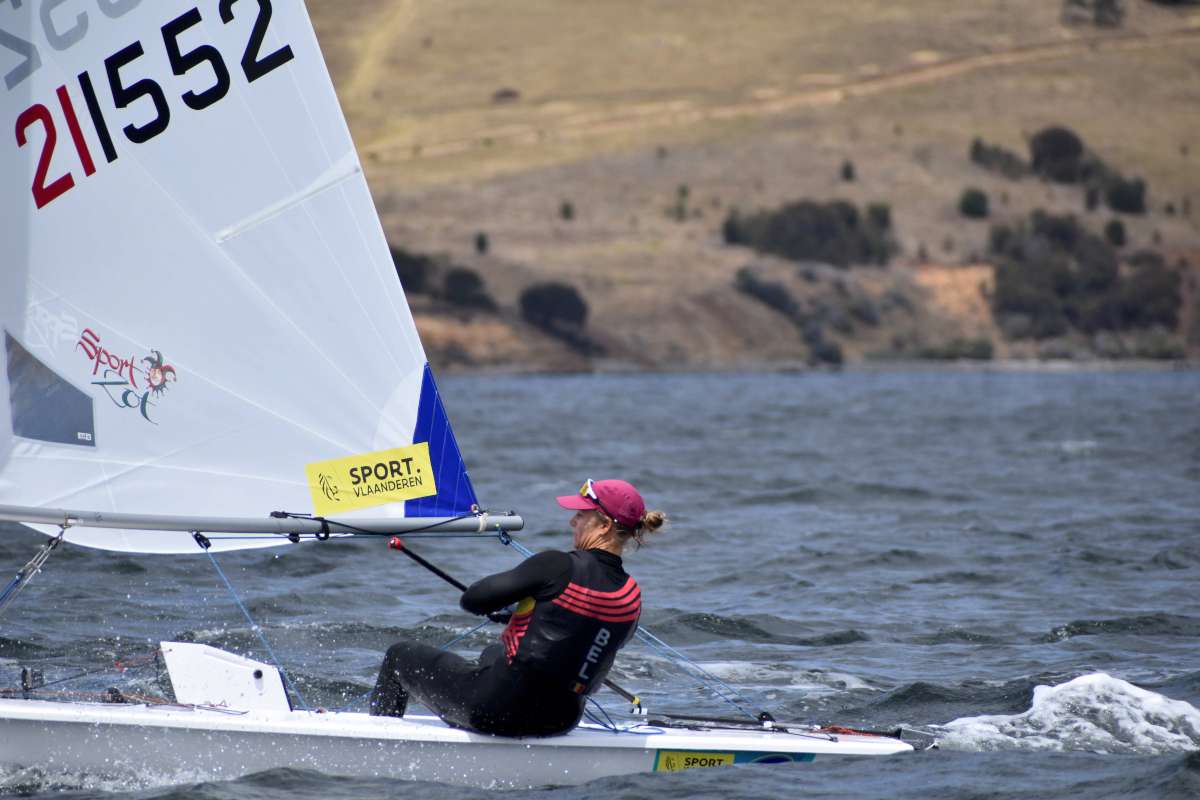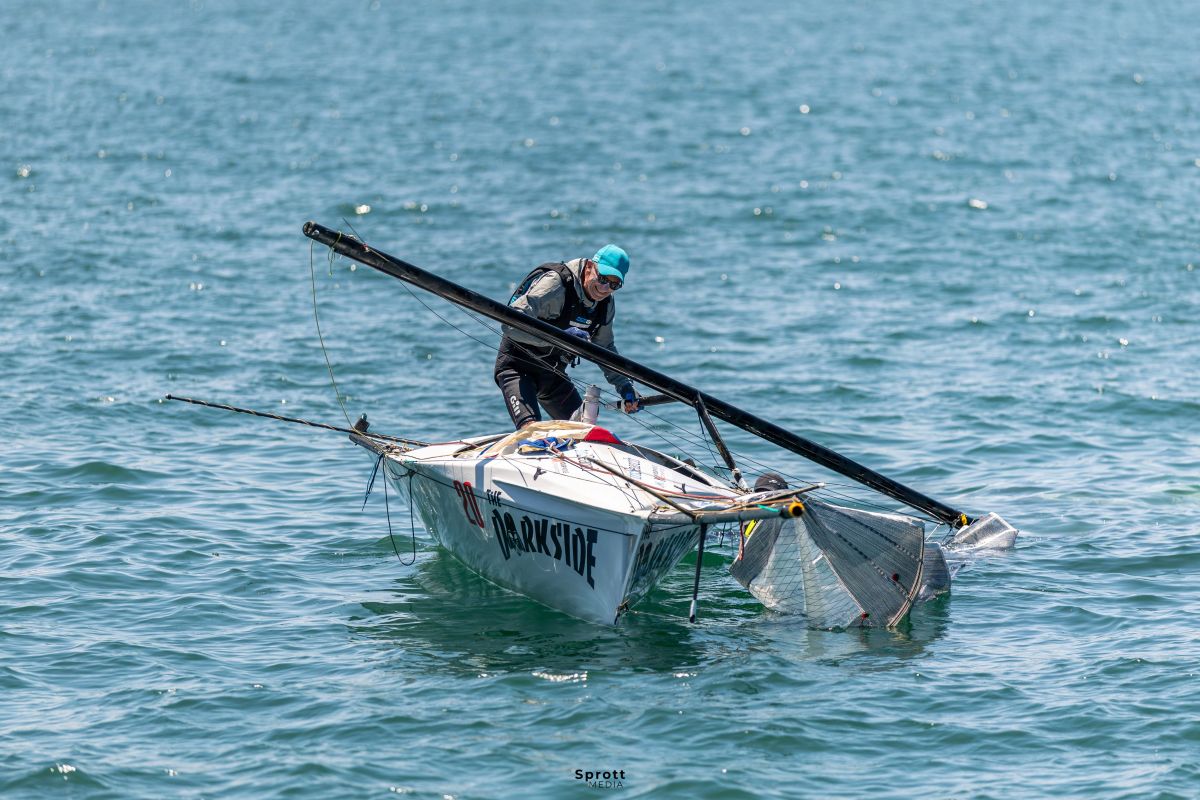Part of the remodelling of the chart table area on my 45 foot (13.7 metre) schooner Britannia involved making a new section of floorboarding; or to use its proper nautical term: the cabin sole.
The floor beneath was just rough plywood unlike the remainder of the boat, which was beautiful teak with white-wood strips. It was perhaps just as well, because in order to reposition the electrical distribution board I had to cut this floor out completely to re-route the wires underneath.
I naturally wanted any new floor to match the boat’s existing sole. I scoured the web and other sources to find teak flooring with whitewood strips to match the floor pattern, but I was unable to locate the exact pattern anywhere.
Britannia’s strips are 9.5 millimetre (3/8″ inch) wide, but the nearest I could find were only 6.35mm and also spaced differently. I thought that using a different pattern would look like a ‘botch job’.
The area was not large, being only 1.37m by 0.91m wide and needing 19mm plywood to bring it level with the existing floor. I could have ordered a 1.22m by 2.44m sheet of teak-faced plywood, but it would have cost in excess of $400.00 with delivery costs and still have no white strips. This would be an expensive section of floor, with nearly half left over and nothing to use it for.
I decided to try and make the exact pattern using a different approach.
Getting the materials
I bought the finest quality sheet of four foot (1.22m) by eight foot (2.44m) by 3/4 inch thick (19mm) smooth-faced plywood I could find in our local hardware store. It cost $47.00 plus they cut it to my rough size free of charge.
It would have been difficult to shape such a cumbersome piece of plywood on the boat, so I made a template using sheets of art board then trimmed the plywood with my table and jigsaws in my garage. I then hauled it back to the boat for a trial fit and, due to a carefully made template, the floor dropped in place perfectly.
I also decided to incorporate a hatch in the new floor, to give direct access to three sea-cocks and a battery beneath.
I first painted all the edges and underside of the plywood with two coats of Interlux Primekote two-part epoxy primer, to seal the edges.
I then ordered the 1.22m by 2.44m sheet of teak veneer. This was quarter-sawn, meaning the grain is pretty straight along the eight foot length with no swirls or knots in the pattern. It was not paper backed like most veneers, but Okoume wood backed; perfectly suitable for flooring and flat sections, like bulkheads.
I was advised to let the sheet acclimatise for 24 hours before trying to glue it to the plywood, to minimise any shrinkage or expansion once it was glued to the plywood.
In the beginning
When I first attempted veneering I was very unsure how to use these ultra-thin sheets of real wood to cover damaged and rebuilt surfaces on my 35 year old boat.
Veneering has a sort-of mystique about it, which only master carpenters are supposed to comprehend. In truth it is the easiest of materials to instantly improve timber, especially flat areas like bulkheads or floors.
The veneer can easily be cut with scissors and glued with regular contact adhesive. The new surface can then be treated the same as any other teak, varnished, oiled or left untreated. The downside is, good quality veneer is not cheap and my sheet cost $157.00 including shipping.
But veneering is invariably easier and cheaper than replacing complete panels of teak faced plywood.
Veneer also offers a great opportunity to be artistic. Just because you are veneering a teak panel does not mean you have to recover it with teak veneer. There are lots of beautiful wood veneers available with amazing patterns, like walnut, cherry, mahogany, etc., all of which can enhance the décor of any boat.
Having mentioned that veneering is not difficult, there are still a few tricks of the trade worth noting. The easiest method to glue veneer to a largish stiff substrate like plywood, is to first copy the outline of the ply on the underside of the veneer with a felt tip pen.
With the veneer placed flat on a level floor, contact adhesive is then spread over just the outline drawn on the panel. Then adhesive is similarly applied to the plywood. I used Weldwood contact cement and poured it out of the tin, then spread it with a trowel having 1/8″ serrations.
When the glue is nearly ready to bond, instead of trying to locate the large wobbly sheet of veneer accurately on top of the plywood it is easier to carefully lower the plywood on top of the teak, to the guidelines already drawn. The teak can then be trimmed to remove it from the whole sheet, turned over and smoothed using a wide blade plasterer’s trowel.
This is better than a roller, because most rollers are attached only at one end and pressure is therefore bound to be a little uneven. A wide blade trowel has the handle in the middle, which allows even pressure over the whole blade as it is drawn along the veneer from the centre outwards. This squeezes all the air out and minimises the chance of future bubbling of the veneer.
I trimmed the edges using my handheld router with a 1/2″ inch straight cutter, then edged the hatch with 1/4″ inch wide teak, along with a brass lifting handle to match the rest of the hatches. The veneered board looked superb, but the job was only half done.
Now came the tricky bit
I somehow had to make thirteen 3/8″ wide wood strips and set them into the teak veneered plywood. However, I could not find any actual holly timber anywhere locally, or even on the web.
The actual type of wood did not matter that much, so long as it was a hardwood and the right shade to match the existing floor. The nearest match I could find was maple, in 1.24m long sheets 3.17mm thick. Maple is also a white wood like holly and some boats have teak and maple floors, so I was not bothered what it was called because it matched the existing floor extremely well.
I set up my bench saw with a new 60 tooth 10″ diameter carbide-tipped blade, which cuts thin timber very cleanly. Using the table saw and its guide I carefully cut thirteen strips out of the sheet, each exactly 3/8″ wide. This produced strips 3/8″ x 1/8″ to form the inlay floor strips.
The next process was to machine grooves in the teak board to take the strips. For this I used my hand-held router, fitted with a 3/8″ plunge cutter, which I set to produce a 1/8″ deep cut. I taped the end of my vacuum hose to the router to suck shavings out from the tool and prevent them building up in the groove.
I placed the router level with the centre of where I wanted the first groove, then tightly clamped a stout straight timber board to the floorboard to act as a guide. It was then just a matter of slowly pushing the router along the guide, with a little heart pounding for the first cut.
The result was a perfectly straight 9.5mm wide groove down the length of the teak board. I repeated this process with a 5.39cm space between until I had all the grooves machined.
I used Titebond premium wood glue to bond the strips into the grooves, which only needed a tap with a mallet to seat them level with the veneer.
I let the glue harden for 24 hours, then lightly sanded the whole sheet with my belt sander with 120 grit. These 9.5mm deep strips will be wear resistant because, by contrast, the strips in the existing cabin sole are only the same thickness as the teak veneer, about 0.81mm.
I rolled on a first coat of Cetol clear marine wood varnish, thinned with mineral spirits, then two unthinned coats, without sanding between coats. Not only does this produce a thicker coverage for floor protection, but also produces a non-slip surface because the unsanded wood leaves a slightly coarse finish., It can hardly be felt even with bare feet, yet it also results in a glossy finish.
I then decided to glue a layer of thermal insulation to the underside of the board to minimise heat coming through from the engine area. For this I used 2″ inch thick Rmax Thermasheath foam insulation board with aluminum foil on one face. This has an insulation rating of R6, which is the highest available for this thickness of foam. I glued it to the underneath of the floor using Liquid Nails construction adhesive, which does not melt the foam.
The new floor was then carefully slid in place and matched the existing sole perfectly. I screwed it down and filled the countersunk holes with teak plugs
Job done!
The whole project was a back-aching sort of job with a lot of kneeling down and sawing, but well worth the effort to match the existing sole.
I am sure it would not have looked right had I used an odd size ready-made teak flooring. Using veneer was also much cheaper than buying teak faced plywood.
I even had a big piece of veneer left over, which I used to repair other parts of Britannia’s teak. ≈
























